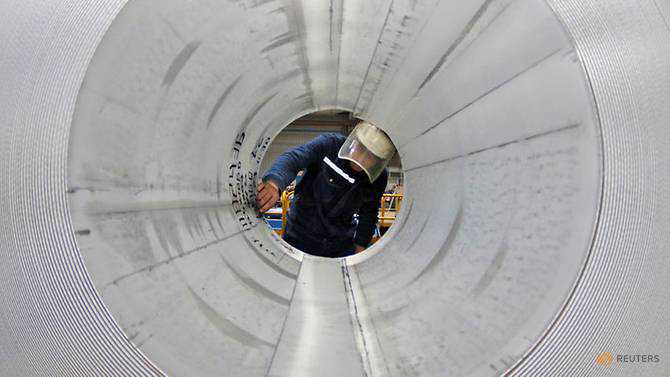China November factory activity unexpectedly returns to growth
01 December, 2019

Factory activity in China unexpectedly returned to growth in November for the first time in seven months, as domestic demand picked up on Beijing's accelerated stimulus measures to steady growth.
But gains were still slight, and export demand remained sluggish. More U.S. tariffs are looming within weeks and Beijing and Washington are still haggling over a first phase trade deal.
With China's economic growth cooling to near 30-year lows and industrial profits shrinking, speculation is mounting that Beijing needs to roll out stimulus more quickly and more aggressively, even if it risks adding to a pile of debt.
The Purchasing Managers' Index (PMI) bounced back to 50.2 in November, its highest since March, China's National Bureau of Statistics (NBS) said on Saturday, above the 50-point mark that separates growth from contraction on a monthly basis.
The result compared with 49.3 in October.
A Reuters poll showed analysts expected the November PMI to come in at 49.5, rising just marginally from the previous month.
The official factory gauge pointed to an improvement in China's vast manufacturing sector last month. Total new orders bounced back to expansionary territory with the sub-index rising to 51.3, the highest level seen since April.
That indicates domestic consumption firmed up after Beijing repeatedly urged local governments to kick stimulus up a gear to meet economic goals before year-end.
Beijing has front-loaded 1 trillion yuan (US$142 billion) of a 2020 local government special bonds quota to this year and has urged that they be issued and used as early as possible, a sign that some analysts believe suggests the government is worried about downward pressure on the economy.
Factory output also rose to 52.6 in November, the strongest pace since March.
But uncertainties in the U.S.-China trade conflict clouded the outlook for external demand. New export orders fell for an 18th straight month in November, albeit at a slower pace, with the sub-index rising to 48.8 from 47.0 in October.
U.S. President Donald Trump said this week that the world's largest economies are close to reaching agreement on the first phase of a trade deal. But trade experts and people close to the White House said it could slide into the new year, given China is pressing for more extensive tariff rollbacks.
The next U.S. tariff deadline is Dec. 15, when it is scheduled to slap a 15per cent levy on about US$156 billion of Chinese products.
The PMI survey also indicated factories continued to cut jobs in November despite slightly improved business confidence. The employment sub-index was at 47.3, unchanged from that in October.
Beijing's drive to guide more bank lending towards small private firms appeared to be working. Their PMI index recorded the strongest gain in November, compared to medium-sized and large firms, but their performance was still the poorest of the three at 49.4.
SERVICE SECTOR GROWTH
Growth in China's services sector activity also quickened in November.
The official services PMI picked up to 54.4, recovering from October's 52.8, the lowest point since February 2016, a separate NBS survey showed.
A strong services sector has offered Beijing some cushioning effects as manufacturers face growing difficulties in securing demand both at home and abroad.
However, the sector's resilience weakened late last year amid a broader economic slowdown.
China's gross domestic product growth is expected to slow to a near three-decade low of 6.2per cent in 2019 and then hit 5.9per cent in 2020, according to a Reuters poll.
TAG(s):
